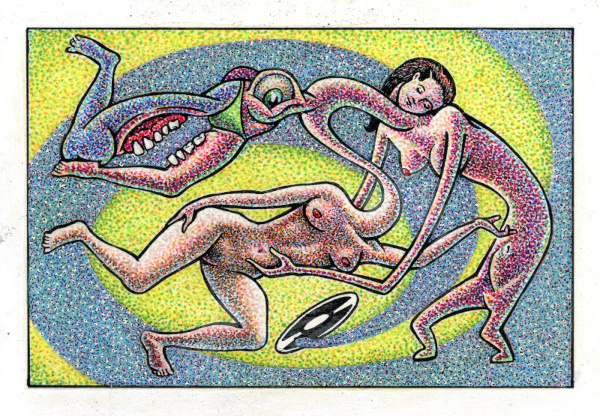
Voice of Jellies
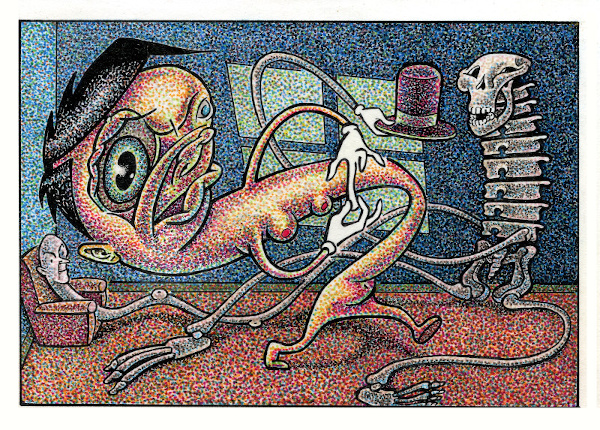
Contrived Exits
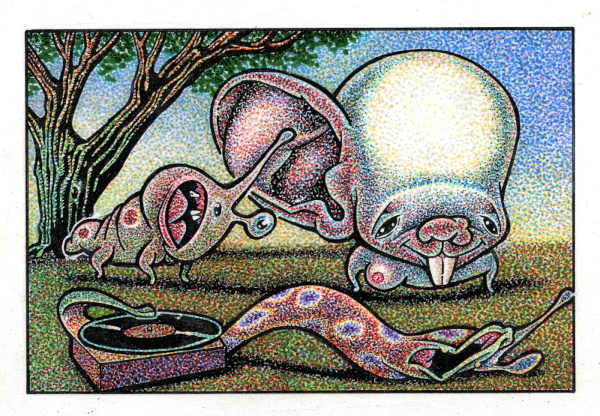
The Tin Ear
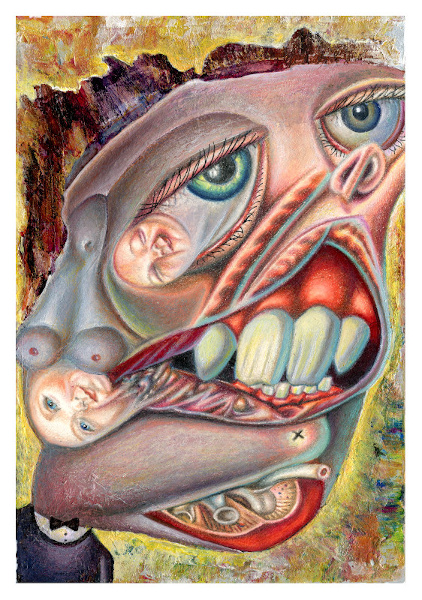
Of The Moment: At the time of the 2002 LA show, my Blender Kitty comic strip was still running in The New York Press. Shortly after the show, a friend launched a website on my behalf. For content, she posted images of my paintings from the La Luz de Jesus Gallery website. I purchased my first iMac computer and scanner around this time with funds raised from painting sales, and part of my first order of business was to take control of the website, then hosted by GoDaddy. I cannot recall if the site was already named blenderkitty.com, but comics joined paintings as featured content.
None of the works in this next section are larger than seven inches by their longest dimension. Contact me at: teaguemichael5858@gmail.com for purchase information on individual artworks.




Materials and Media: All works on paper presented on this gallery page are mixed media, which includes color pencil, color marker, ink and pen, collage, and acrylic paint. Around 2014, toned paper and white charcoal were added to my graphite drawing toolkit. Examples of this technique are showcased on my second gallery page.
Koh-l-Noor rapidiograph pens are unexcelled for drawing, but due to their temperamental nature and difficulty in cleaning, I stopped using them years ago in favor of disposable archival pens. My choice of paper is Strathmore’s 500 Series Bristol board (Flat Plate Finish), and less so the 400 Series. Art in this section was made with the 500 Series.
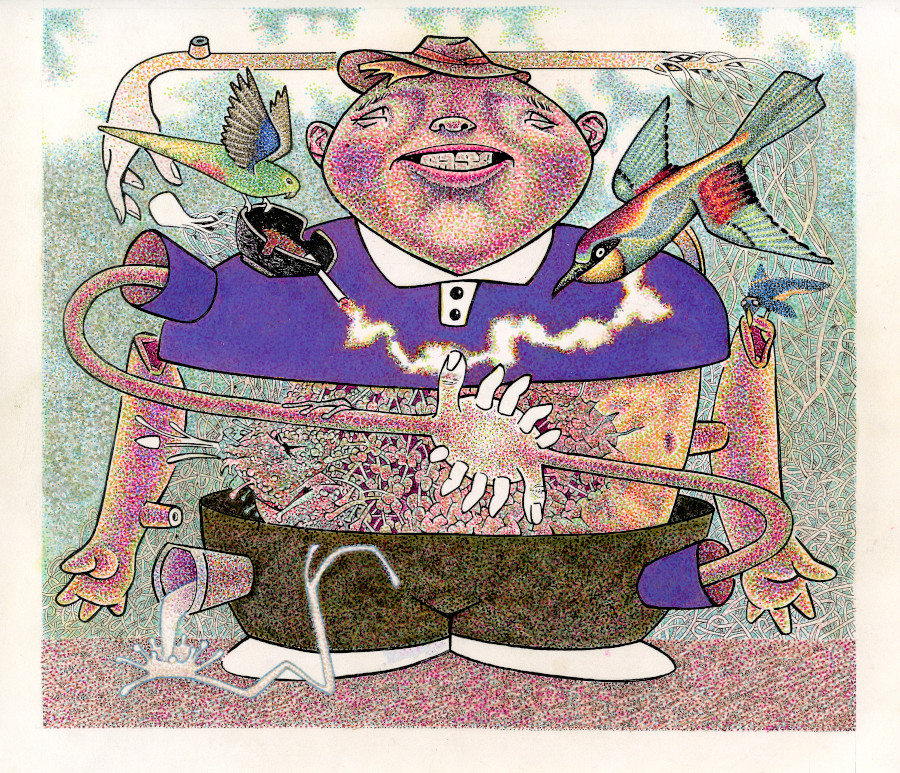
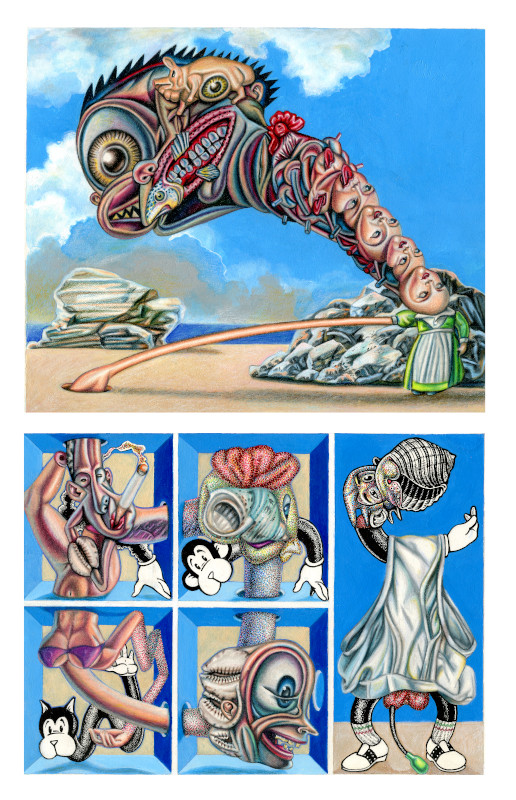
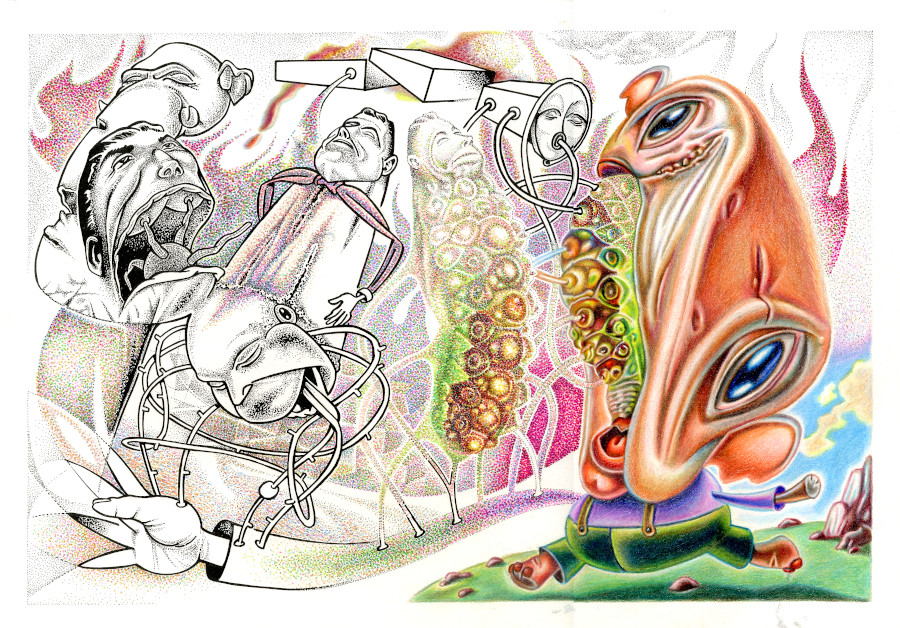
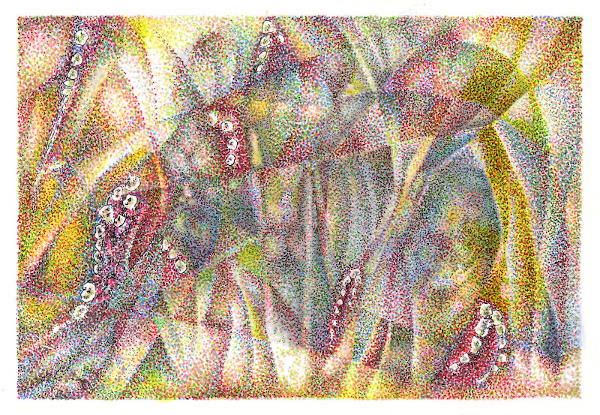
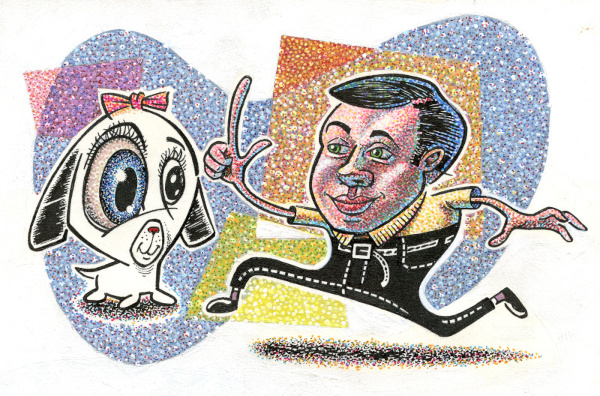
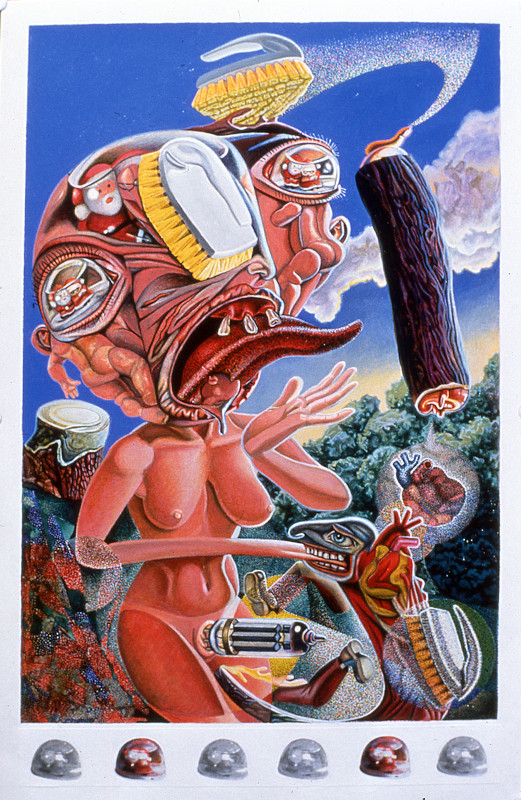
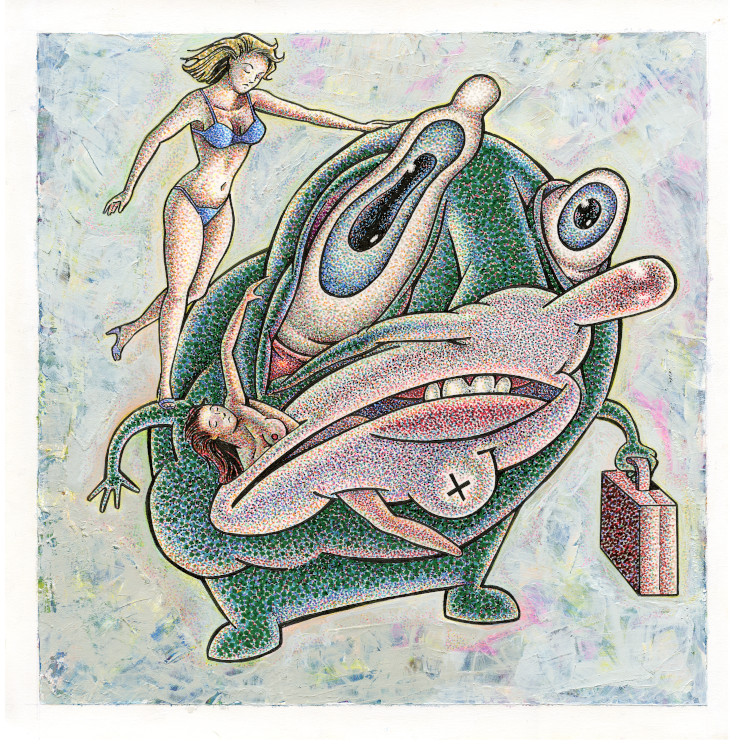
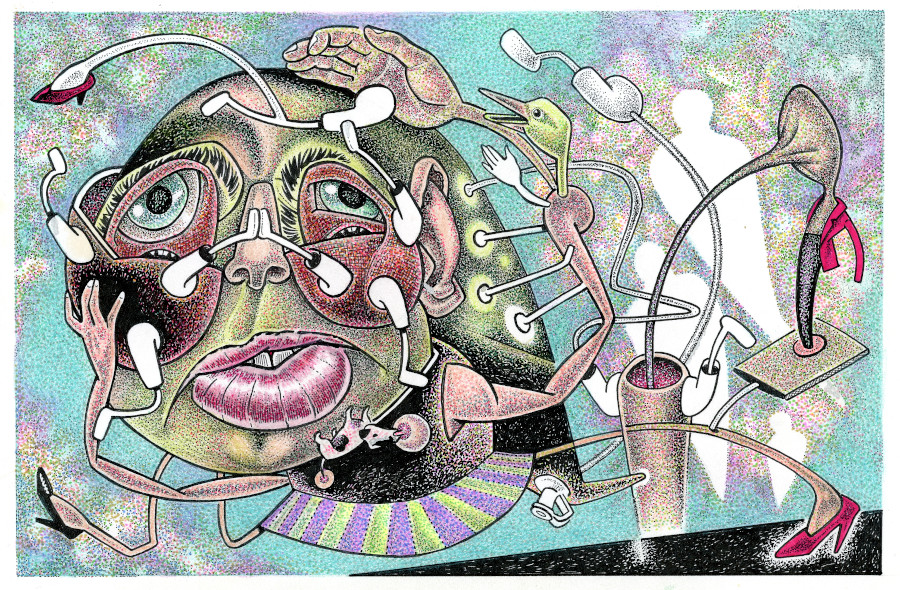
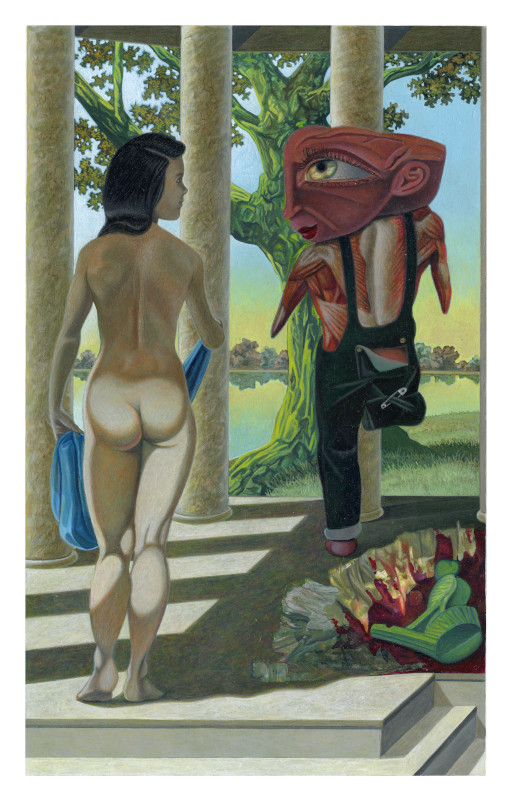
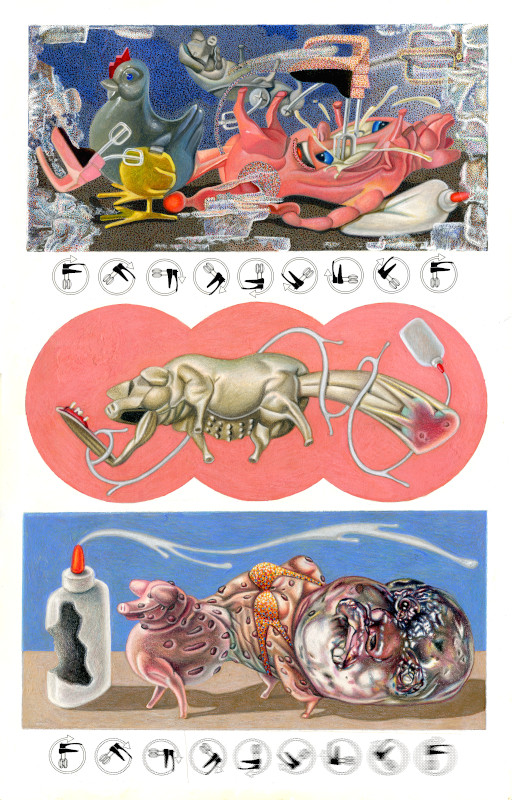
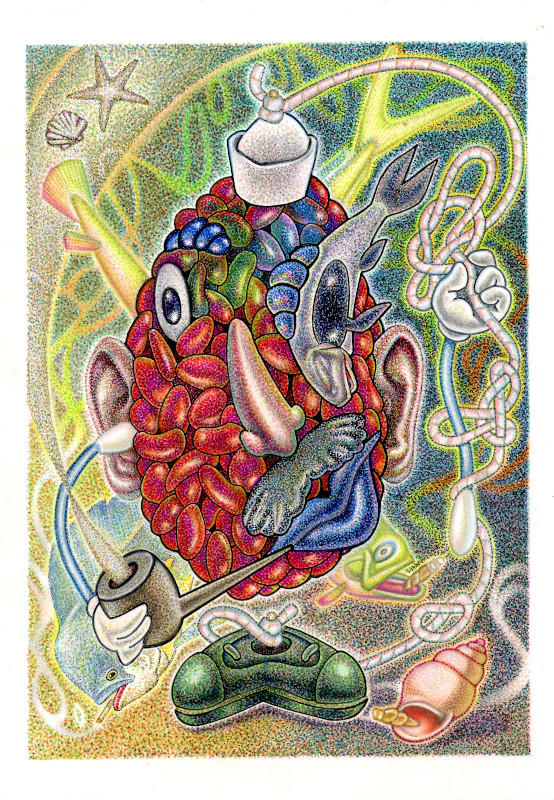
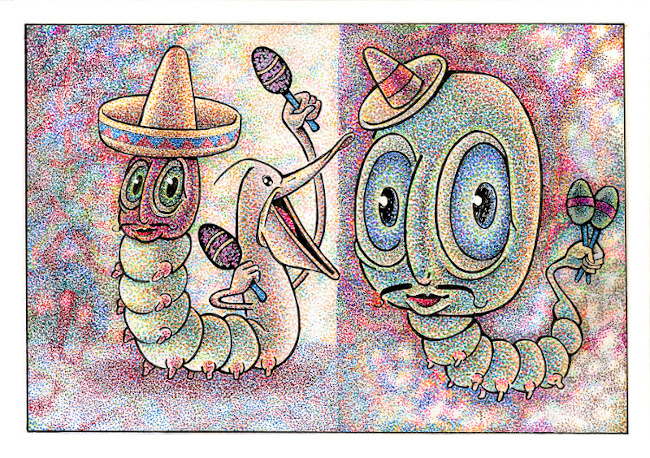
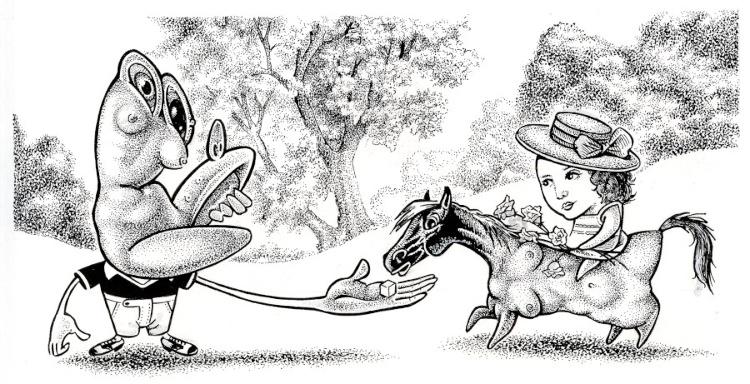
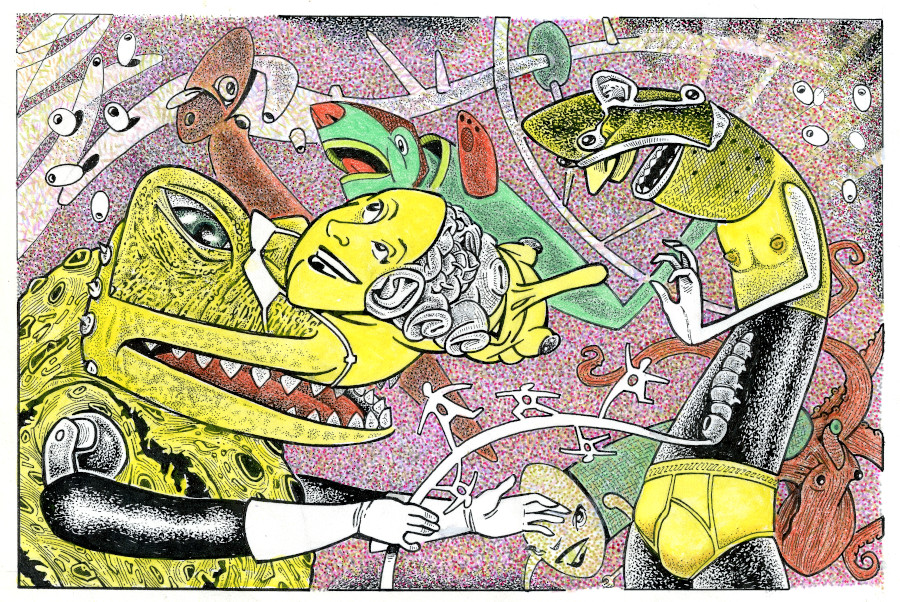
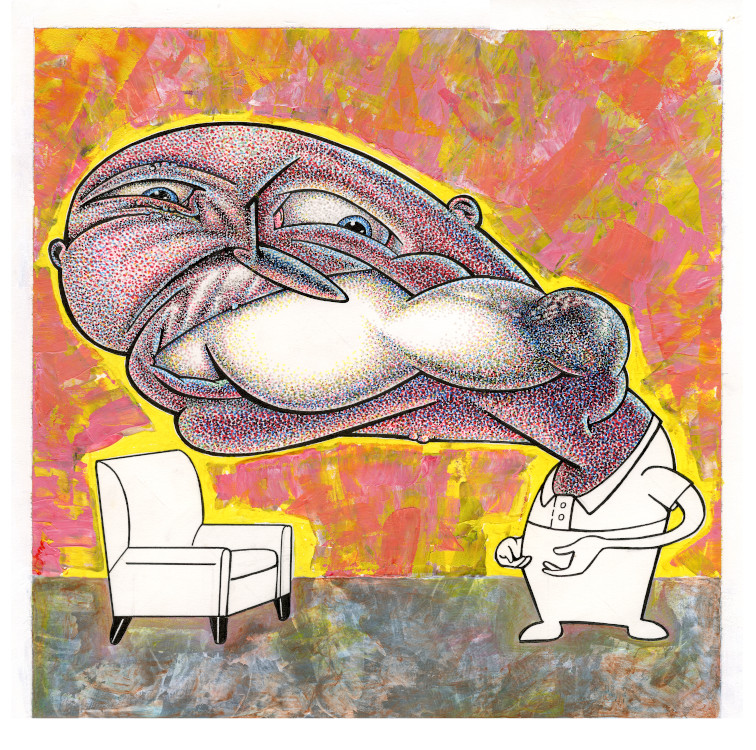
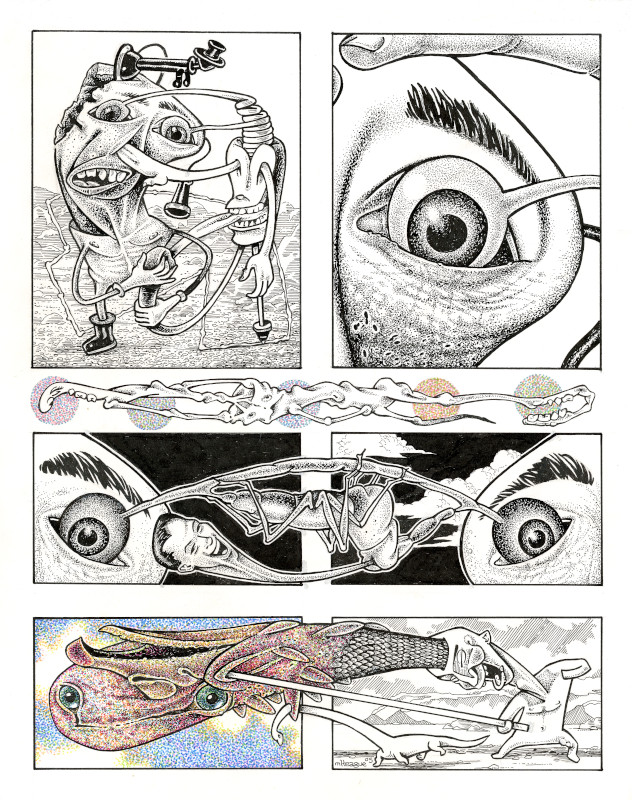
Pens versus Paintbrushes: I have quite a collection of disposable pens, but I do not reflect much on them. A similar indifferent view exists regarding paintbrush brands. My pen collection includes Artline, Winsor & Newton, Micron, Staedtler, and Le Pen. Micron’s nib is hard and blocky and sometimes leaves a double line. I do not like these pens. I prefer pens with softer tips that ride evenly over smooth paper. Le Pen is my favorite.
Brush and Ink versus Fine-line Marker: I wish I had developed the ability to use brush and ink since I admire comics artists who work in this style, especially Charles Burns, Jim Woodring, and Al Columbia. But here you have to choose between a look and level of detail; and I love detail too much. Even the smallest brushes (Winsor & Newton University Series, 000 is the brush I use most often in oil painting) leaves a mark many times too big for the finest detail on paper.
You can, of course, use both approaches in a drawing (brush and ink and fine-line marker), but the look may be incongruous since the latter negates the bold simplicity of the former. Brush and ink is dynamic precisely because it is clean and bold. This boldness, however, does not extend to pigment. India ink dries flat and dull, whereas markers hold their blackness due to the inclusion of varnish. One may perceive a mild conflict in tonality where the two inks are seen side by side. A black and white stack camera will equalize these differing shades of black for print publication, while gallery track lighting will be less accommodating.
Deconstruction of Works on Paper: With my background in fine arts, I am always thinking about how art will appear to the viewer hanging on a gallery wall, and whether the artist is okay, in this context, with his non-photographic blue markup pencil and other corrections being seen. I have attended a few gallery shows where a cartoonist’s work was exhibited, and the rough finish of the storyboards, which is both the prerogative and necessity of a cartoonist in preparing his art for print media, adds a curious intrusive layer to the experience.
I once attended an art opening where a MFA printmaker nailed his etched metal plates to the wall. They were beautiful, and (frankly) more interesting than the prints lifted from them. This idea of showing one’s rivets and solders has been around for a while in artmaking, and coopting it into the domain of Postmodern deconstruction was an obvious next step. (I discuss alternative comics artist Al Columbia and his distinctive use of this technique in my comics portfoilo pages.)
Likewise, trial and error has become a feature, and not a bug, of my own creative process. More so once I began “documenting” my work process through time-lapse YouTube videos in 2023. A good deal of design is worked out before the camera starts rolling, but not everything.
Current Landscapes/ Back/ Home
Copyright © 2010-2023 Michael Teague. All rights reserved.